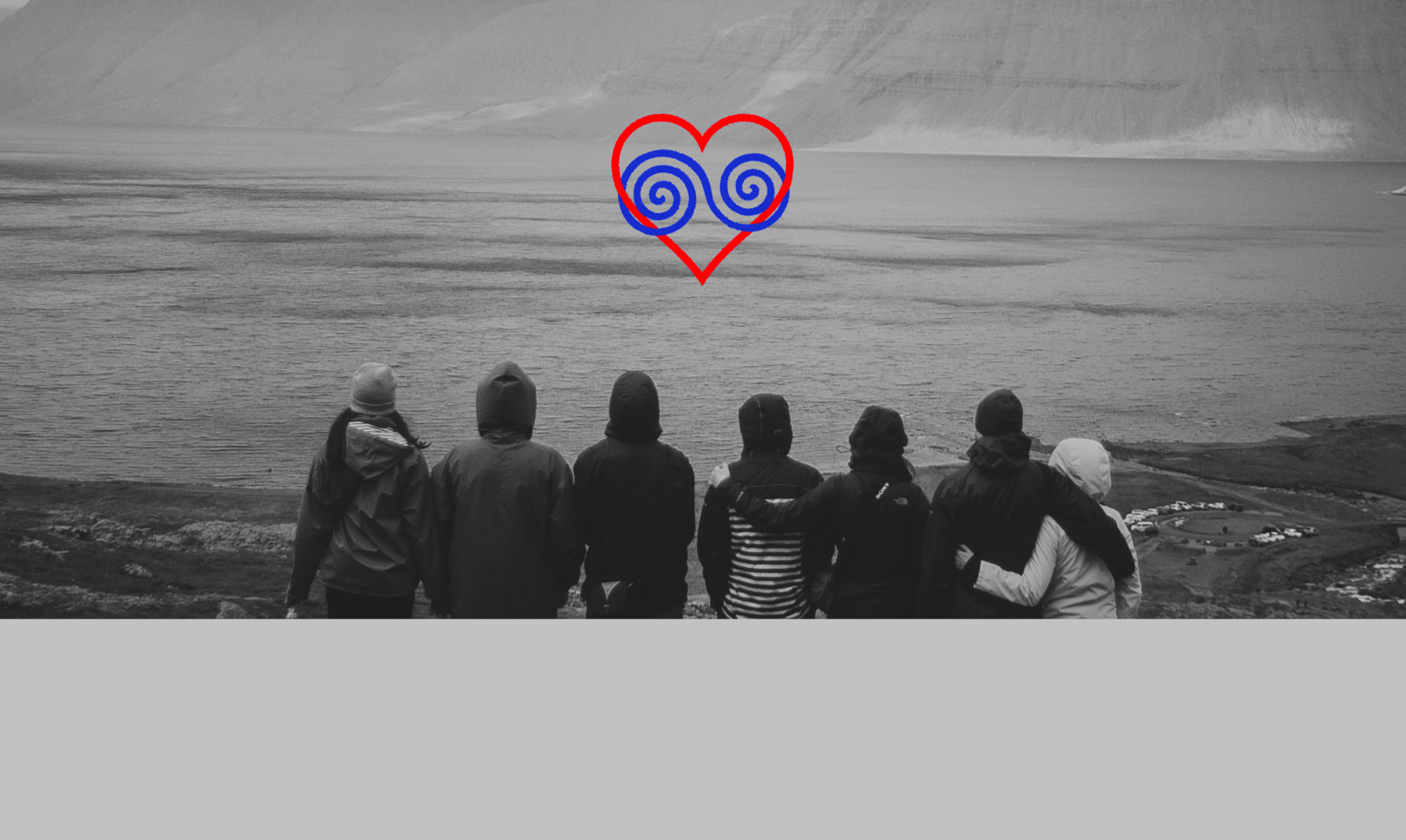Declaration of Dependency
Ever since I started working on the Oligoamory-project – which is part of the larger context of ethical non-monogamy – I wanted to write an article on the subject of “codependency“.
And since I’m constantly inviting to nearness, commitment and identification with the relationship as a whole (see Entry 3 and Entry 4) I also think that it is important to give an opinion regarding that specific topic.
However, there is already plenty of literature concerning this neuralgic field of research, both analogue and digital – furthermore, this phenomenon is the subject of both socio-medical and psychological health care – and because of my limited expertise I will restrict myself to a personal statement.
That’s why I want to outline my point of view here as a participant of multiple relationships and in this way share my thoughts and my own questions.
First of all, I am sometimes still confused by the occasionally inaccurate use of terms regarding the subject.
The mainly qualifying word “codependency” had originally developed during the 60s and 70s of the 20th century, especially in the self-help movement among relatives of addicted persons. Within organisations such as the “Alcoholics Anonymous” and in particular the Al-Anon family groups, which began to form in Germany since 1970, the term eventually entered a broader linguistic usage. The principal use of the term in the context of addiction refers to “a behavioural condition in a relationship where one person enables another person’s addiction, poor mental health, immaturity, irresponsibility, or under-achievement.”. It was recognised early on, that in this way relatives and friends of an addicted person could become “accomplices” of a dependent person, thus creating a dynamic which in my opinion, however, should be designated more appropriately as a warped kind of “interdependence”. Regarding this, especially the American psychiatrist Timmen L. Cermak (starting 1986) called attention to the fact that “codependency” of this nature should be treated as a separate personality disorder.
Nevertheless, when the issue of “interdependence in intimate relationships” was discovered as a marketable topic in the sprawling self-help wave of guidebook literature and workshops in the late 1990s, the original context of addiction, which applied only to a limited range of customers, was soon somewhat blurred. As a result, the term “codependency” remained – thereby covering several issues of malfunctioning “interdependence” in various social contexts.
This development was quite marketing-oriented since it introduced “codependency” into the public dialogue regarding unhappy relationships at large – but quite often the criteria were biased by viewpoint or even school of thought (scientific, socio-critical, self-help, esoteric).
Because of that the term “codependency” remained attached to a tragic fate that requires immediate treatment – and a statement like “You are codependent!” will always imply pending doom.
The same is true for terms like “toxic” and “pathological” (in social networks all too readily added), which also give the appearance of diagnostic vocabulary, thereby containing no tangible description and often brandished to provoke resentments and negative feelings – yet being arbitrary estimations.
Concerning the relationship level, this disease mongering sometimes creates a problem of understanding. Following Cermak’s initiative, what might be the problem?
According to him, among the core characteristics of codependency is an excessive reliance on other people for approval and a sense of identity. Regarding the relationship? Regarding love? Regarding ones personal amount of freedom?
If that is the case, we have to look closer on the interdependent connections in a relationship-system like e.g. Oligoamory:
For in my opinion, of course, we renounce part of our (absolute) personal freedom when we become part of such a (loving) relationship. We are doing that because we want to contribute with our commitment to an additional value, which is created by the contributions of all the potentials of possible participants – and thereby the whole relationship becomes literally “more than the sum of its parts” (see Entries 7, 9 and 14).
Accordingly “entering a relationship” always goes with a certain desire to assume responsibility (which, by the way, is an attribute of being grown-up!) and the endavour of predictable integrity (I recapitulate: that the individual’s actions are based upon an internally consistent framework of principles).
This works, even if we consider an arrangement in some respects, more or less unvarnished, purely as an exchange, for example: One person works, the other takes care of the household. By fulfilling their part of the (emotional)contract, both parties release each other from the reciprocal tasks, and that way a common gain is created. And, of course, these two (unromantic) participants are in a sense immediately mutually dependent on each other. For if one side wouldn’t act committed or responsible, the previously balanced arrangements would immediately be shifted to the disadvantage of the other party, and the added value of e.g. shared free time or additional resources would vanish for both.
At this point, therefore, I urge you to have enough honesty as participants in loving relationships, that you are aware of this mutual dependency, which you entered voluntarily, be it conscious or implied. In everyday life, in every connection between people, a whole bundle of reciprocal, jointly committed liabilities and self-commitments quickly accumulate – and it would be a somewhat shameful self-deception if we were tryingto persuade ourselves as adults that “we would not know how they came about”.
And at last when we are speaking about loving relationships, we are (hopefully!) not referring to chain gangs which are forcibly shackeled and who are discharging their duty curtailed by each other – but rather to a balance of dynamic tension, like children on a seesaw: It only works if no-one jumps off or is dragging her*his weight (regarding multiple relationships, readers may now simply imagine an ingenious multi-seesaw, which works the better, the more the players cope for all-round equilibrium…).

According to oligoamorous standards, “mutual interdependency” per se is therefore not a deficiency in need of treatment which has to be eradicated, and it is neither toxic nor pathological in its conscious form.
Such a well-adjusted, or even better: well-established, reciprocal joint venture is rather a committed, dynamic and open relationship that benefits from regular negotiations and (re)adjustments.
But alas – since we do not always exist in a conscious and well-conceived ideal state, I nevertheless have found myself in situations in which there were signs that my relationship of intended beneficial mutual cohesion still had entanglements of codependent nature. Because in a sense, of course, we can in deed be “addicted” to a person, to a relationship or to individual importance. And this is almost always the case when our (unfulfilled) neediness gains the upper hand and gets the better part of us. And neediness can be an extremely powerful motivator that impels us for a long time, without us taking notice – neither deliberately nor knowingly. And worse: It can make us cling to the illusion that – for good or bad – we have “earned it” all along.
The psychotherapist, clinical psychologist and feminist Anne Wilson Schaef outlined in her book “Co-Dependence, Misunderstood – Mistreated ” (1992) the following characteristics of codependency:
- Imbalanced emotional situation and (self-)dishonesty
- Strong outward orientation and self-centeredness
- Need for clinginess, over-controlling and manipulation
- Lack of flexibility and dogmatism (caused by fear)
Note: When I tackled the approach of Anne Wilson Schaef during the composition of this article, I briefly came to a dead end because I could not immediately understand the linking connection touching the context of dependency. Finally, I understood that Wilson Schaef and her co-thinkers want to draw attention to a global problem inherent in many social systems:
Most of us still live in circumstances which facilitate and reward dependency (and the preservation of it) by means of manipulation and control. What’s more: The structures and mechanisms, by which this is accomplished on a huge scale, are widely established and approved. Thus, to this day our political systems, our societies and accordingly our relationships are endangered by denial, depression, compulsion, anxiety, lack of self-esteem, over-controlling, external referencing and the like (In the feminist discourse, it is criticised above all that mostly women suffer from this kind of “preservation of dependency” [see also the last paragraph of Entry 5!]).
Since it is very easy for our minds to discount such stern descriptions as inappropriate concerning ourselves, I would like to encourage all those sensitive people, who strive for a life in harmonious multiple relationships, to take a deep breath and ponder for a while on their motivations by considering th following questions – which are not always pleasant (I recognised myself to a certain extent in each of them):
Why do I long for (multiple) relationships?
Should activity on the outside distract myself from inner unfulfilledness? Or am I experiencing unfullfilledness in my current relationship? Do I therefore need the attention that I can get by multiple connections in many different ways?
Do I want to confirm my value by potentially recurring relationships? Do I need this confirmation to feel self-assured?
Am I “in love with love” – do I need a strong emotion like infatuation to feel alive (see also Entry 23)?
How much do I try to hide my shortcomings? Or do I rather employ those to get empathy?
Do I posess a self-ascription as an “indispensable provider and problem solver”? Am I quite sure that without me everything would collapse and the others “would be lost”?
Do I sometimes like my role as the “rational one”? Am I sometimes tempted to believe that I should “watch out” for the other(s) and occasionally even see myself as a kind of “guardian”?
Do I particularly value any appreciation concerning my day-to-day efforts? Do I regularly pay attention to these because I’m thinking I’m not being appreciated enough regarding my workload?
Am I standing back “for the sake of love” because otherwise recognition, affection and respect for me are in danger?
Which style of attachment (secure, anxious, possessive, dismissive [see also Entry 14])) has been instrumental in my growing up? Do I therefore establish a certain personal style in my adult relationships over and over again (see also Entry 21)? Do I want princes to share my life, but am I getting only frogs – and do I throw them hopefully against the wall just to find out that I spend my life mostly with damaged frogs¹?
Do I tend to think sometimes in categories like “We against the rest of the world”?
Am I irritated by routine changes because they seem inharmonious and disturbing to me? Do I whish for “light and love” and lingering lightness, because aggressive potentials or questions that I can not immediately answer often feel like shattering, fundamental criticism?
Do I believe that my relationship to other persons can positively influence them?
Does my responsibility for the overall relationship correspond to the responsibility that I am willing to spend on myself?
To what extent have I “settled in my life”?
What about my zeal, the energy, and the degree of my emotional state when I want to communicate or clarify my point of view or one of my qualities? With what intensity do I experience the emotions of my counterparts – and do I occasionally lose track of who feels what (Hello HSP!)?
Where do I stop when I read “diversity means differences, differences mean deviation, deviation means contestation”?
¹ The author Vicky Gabriel wrote in her book “Ways to the old gods” (Arun-Verlag 2002): “Anyone who thinks as an aid […] to know exactly what is good and right for the person seeking help, or what s*he must do to get out of her*his misery, obviously can not release her*him into her*his own freedom and maturity because the helper needs unfree and immature individuals in the surroundings to feel valuable in comparison. Oh, I’ve been wondering for years why in my surroundings never someone turned up »like me«! Why? Because I did not admit these people – because of my own lack of self-confidence, I gathered »poor, needy souls« around me, whom I could »support« with devotion and self-sacrifice and compared to whom I performed incredibly well.”
Thanks to Manfred Antranias Zimmer on Pixabay for the photo.




